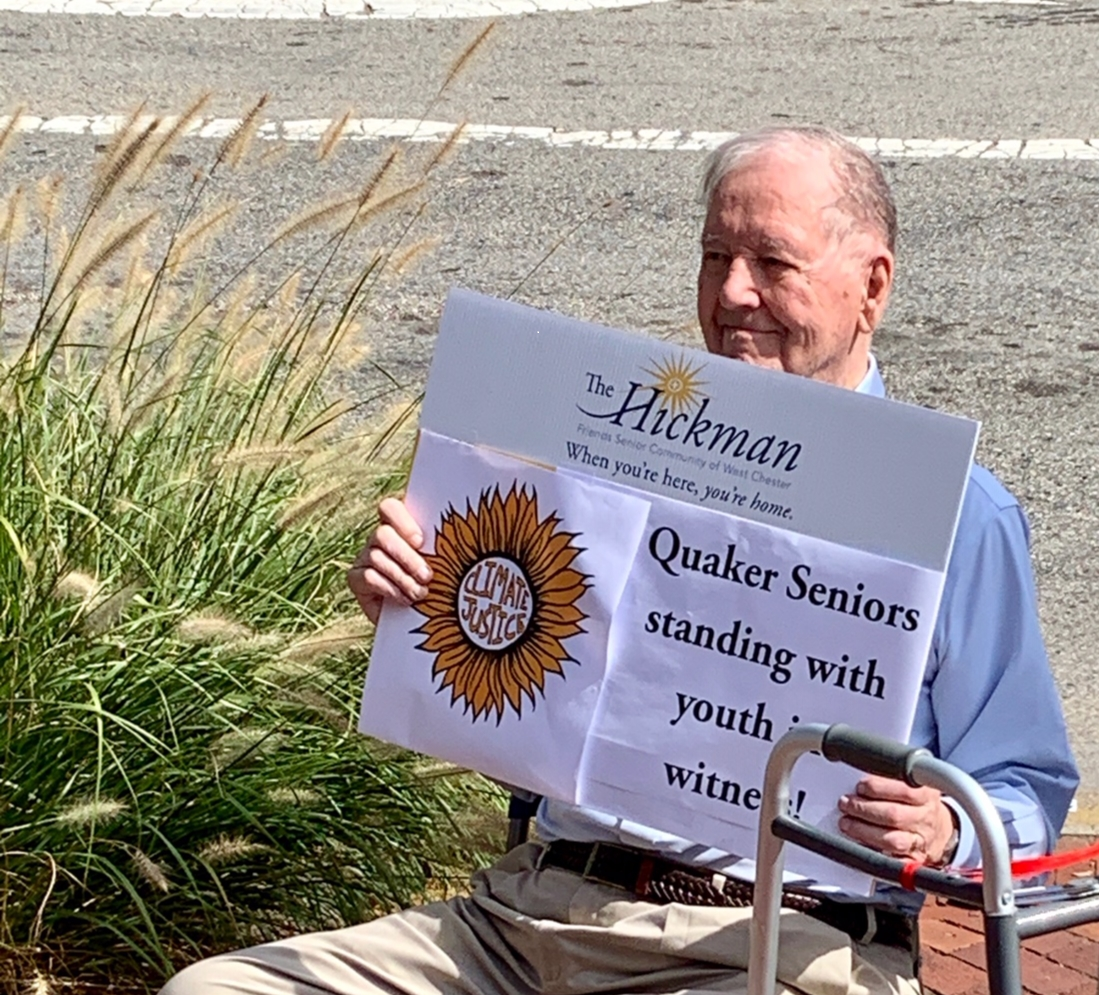
Some web stories come cascading into our in box organically. That’s how this one was built. First, Jen Karsten, who recently left Pendle Hill to become Executive Director at The Hickman, a submitted a two line news story about what she was seeing during Fridays’ Climate Strike in West Chester PA.
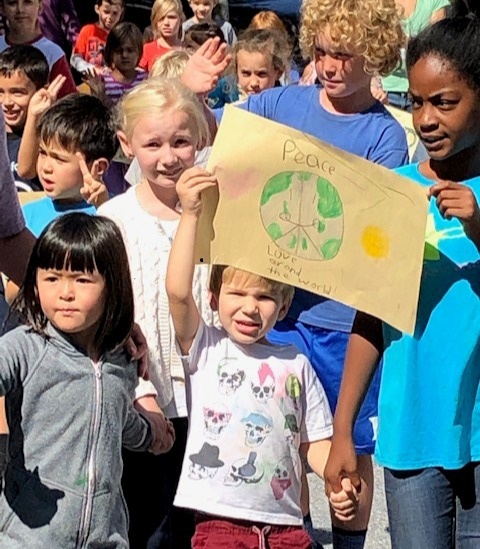
Children were walking about with hand-made climate awareness signs, and residents at the Hickman community supported the children with signs of their own.
She explained she “just wanted to celebrate inter-generational witness (to Climate Action). I watched through the window …While the younger kids did a “march” around the block, some 5th graders went to the courthouse. More West Chester Friends School kids will participate in a 2nd march tomorrow.”
Then we heard from Friends Dennis and Judy Asselin, of Westtown Meeting, and they had this to share from their participation in Philadelphia:
“If we could transport William Penn into the 21st Century, I believe he would have been proud of the School Strike for the Climate which drew several thousand young people yesterday to Center City Philadelphia.”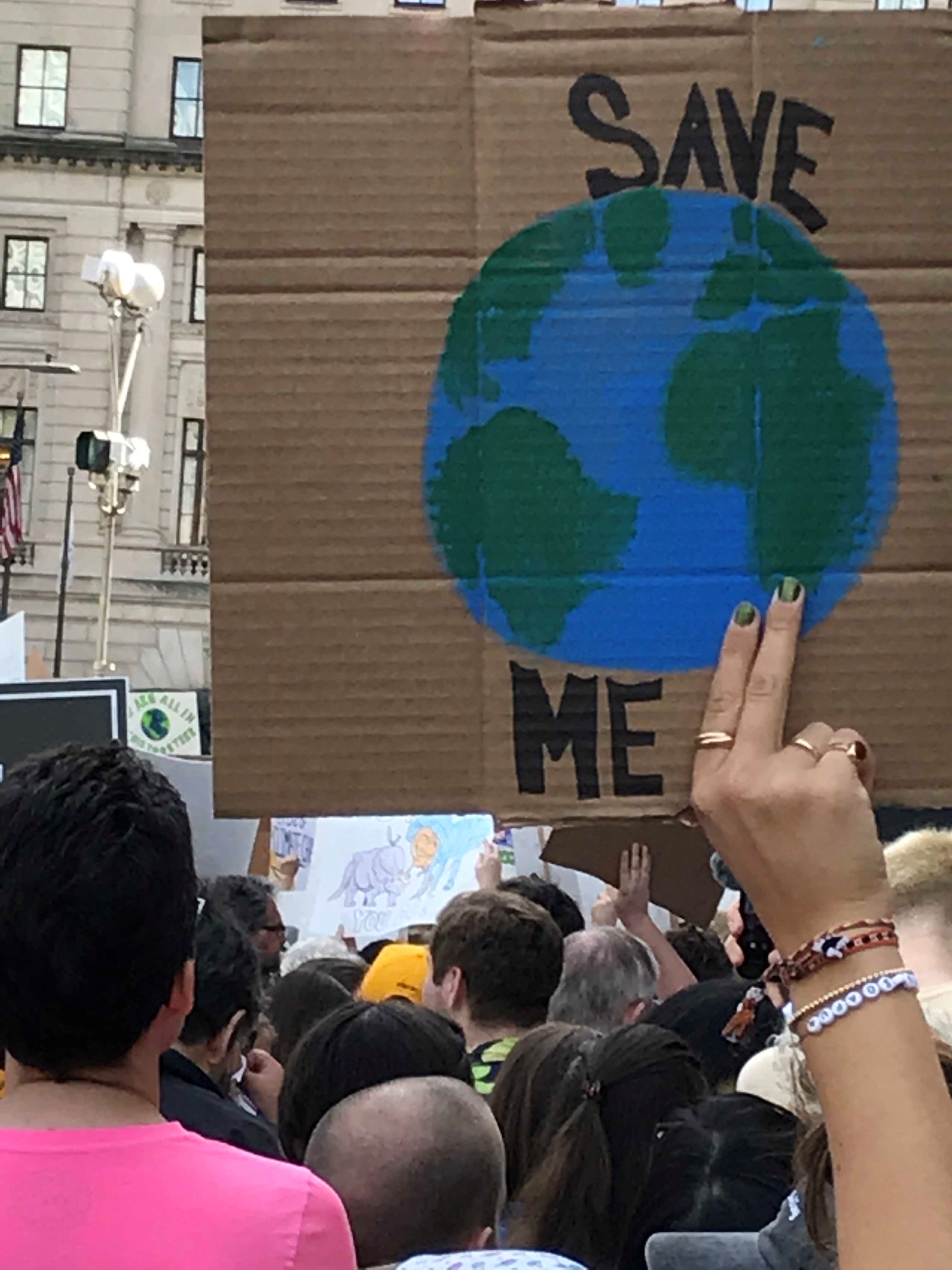
Penn, who was an astute observer of nature and lover of community could have appreciated that all this was done, as Judy writes, “in concert with millions of other young marchers around the globe.”
She continues: “Penn prized protection of conscience over every other aspect of his Charter of Privileges for the new city of Philadelphia back in the mid-1600’s, and today freedom of conscience and the right to peaceful assembly is embedded in the US Constitution.”
Judy feels that “all movements that begin with a call to conscience and discernment of truth,” and grow organically from there.
Dennis and Judy’s photos attest to the mix of ages represented during the walk through center city with hand made signs.
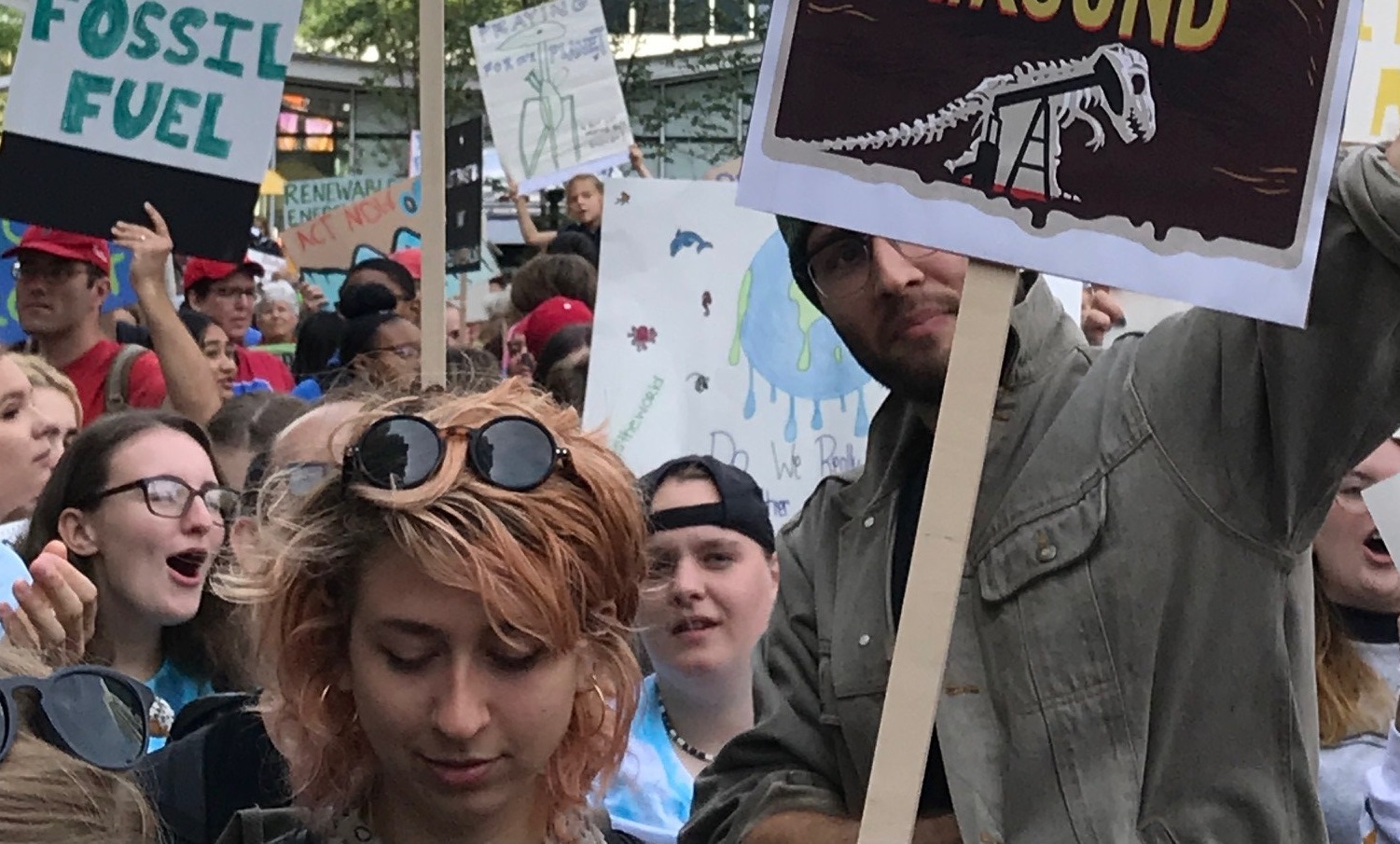 “An inspiring (and) diverse group from elementary school age through college, along with a scattering of parents and other elder supports, gathered at City Hall to hear speakers, then circled down to Locust Street and back up Broad Street to City Hall to conclude their School Strike for the Climate. A common theme linked many of the signs painted on recycled cardboard, and even an old Krispy Creme donut box: “Why should we (the children) care about our future if adults in power do not act to ensure and protect it?”
“An inspiring (and) diverse group from elementary school age through college, along with a scattering of parents and other elder supports, gathered at City Hall to hear speakers, then circled down to Locust Street and back up Broad Street to City Hall to conclude their School Strike for the Climate. A common theme linked many of the signs painted on recycled cardboard, and even an old Krispy Creme donut box: “Why should we (the children) care about our future if adults in power do not act to ensure and protect it?”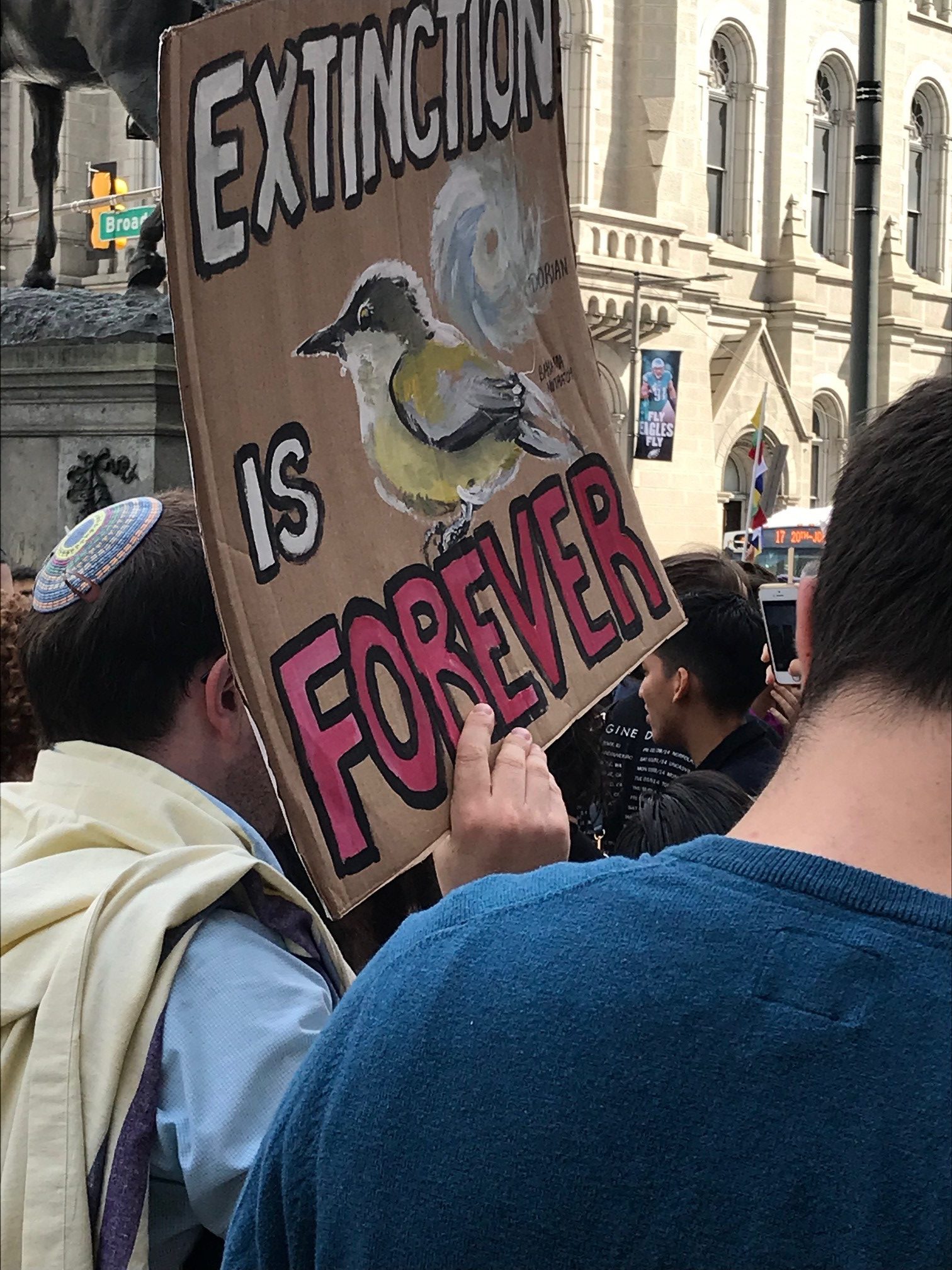
Judy continues: “It’s a good question. The speakers (at the Climate Strike) ranged from ages 13 through 18, and their call for action was inspiring, linking climate justice to social and economic justice, and to the basic rights of people worldwide, not just those in the US. How appropriate that the marchers assembled right under the gaze of Penn’s statue. Is his Holy Experiment taking on new life and a new shape? ”
Beth Taylor, Clerk of Plumstead meeting, went to Sunday’s Climate march in Doylestown. She said that there were about 1000 people out in the Sunday sunshine and shared several moving photos of signs and people.
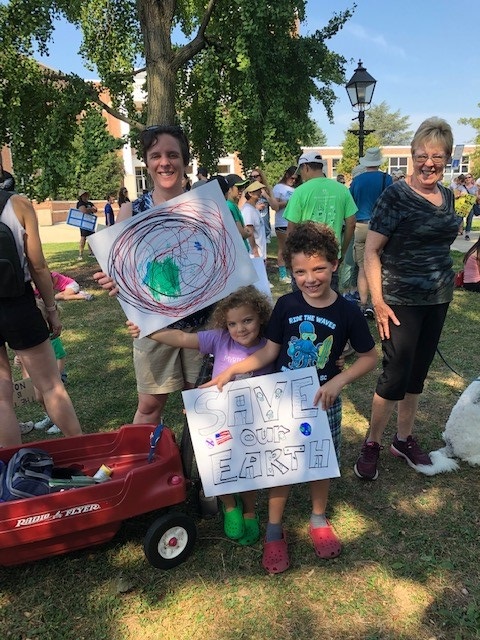
Then this came in from Friend John Spears of Princeton Meeting.
John took a look at what the carbon dioxide numbers need to be vs. what they currently are. He shared some facts from research–sparked by the climate strike–that he did on Friday.
- I tried to boil it down to key facts about the experts’ pessimistic views and their advice on what needs to be done, and the practical feasibility of doing that. Cost is another question–and who pays?
- I kept seeing repeatedly from several sources that, according to the UN report, annual global carbon dioxide emissions need to decline by 45% by 2030–10 to 11 years from now–in order to avoid dire climate consequences. And, we need to reach “net zero” (in other words, total output of emissions is offset 1 to 1 by absorption of emissions by trees, carbon capture, etc.) by 2050.
- Global carbon emissions were about 30 billion tons of CO2 in 2010 , so a decline of 45% from that would get you to 16.5 billion tons as the goal.
- In 2018, global CO2 emissions were 37 billion tons , so to get to 16.5 billion tons would require a 56% decline in global carbon emissions from 2018 levels by 2050!
- From Google – various sources said that 80% of global energy comes from fossil fuels.
- China accounts for 29% of global carbon emissions,
- the US is 16%,
- India is 7% ,
- Japan is 4%.
- China and India are still building high-emission coal fueled electricity power plants. 38% of global electricity production is fueled by coal.
- About 20% of electricity production is nuclear fueled.
- US carbon emissions have been trending down (unlike much of the rest of the world—including Germany—which has experienced increased emissions) because fracking-produced natural gas has been replacing coal as a fuel for producing electricity. Natural gas emits less carbon than coal when burned as a fuel.
John is correct that natural gas emits half what coal does per unit of energy generated. And a much greater investment in nuclear, wind, and solar power will be required to offset carbon-based power generation. Meanwhile, after dropping for several years (because economic recessions spike emissions downward due to manufacturing decreases and other retrenchments), the US had an increase in its carbon emissions in 2018, although a 0.7 drop is projected in 2019.
Friends agree the goal is ambitious, and not everyone feels it’s possible. Still, the message that came in to PYM is that Friends hope we will try.